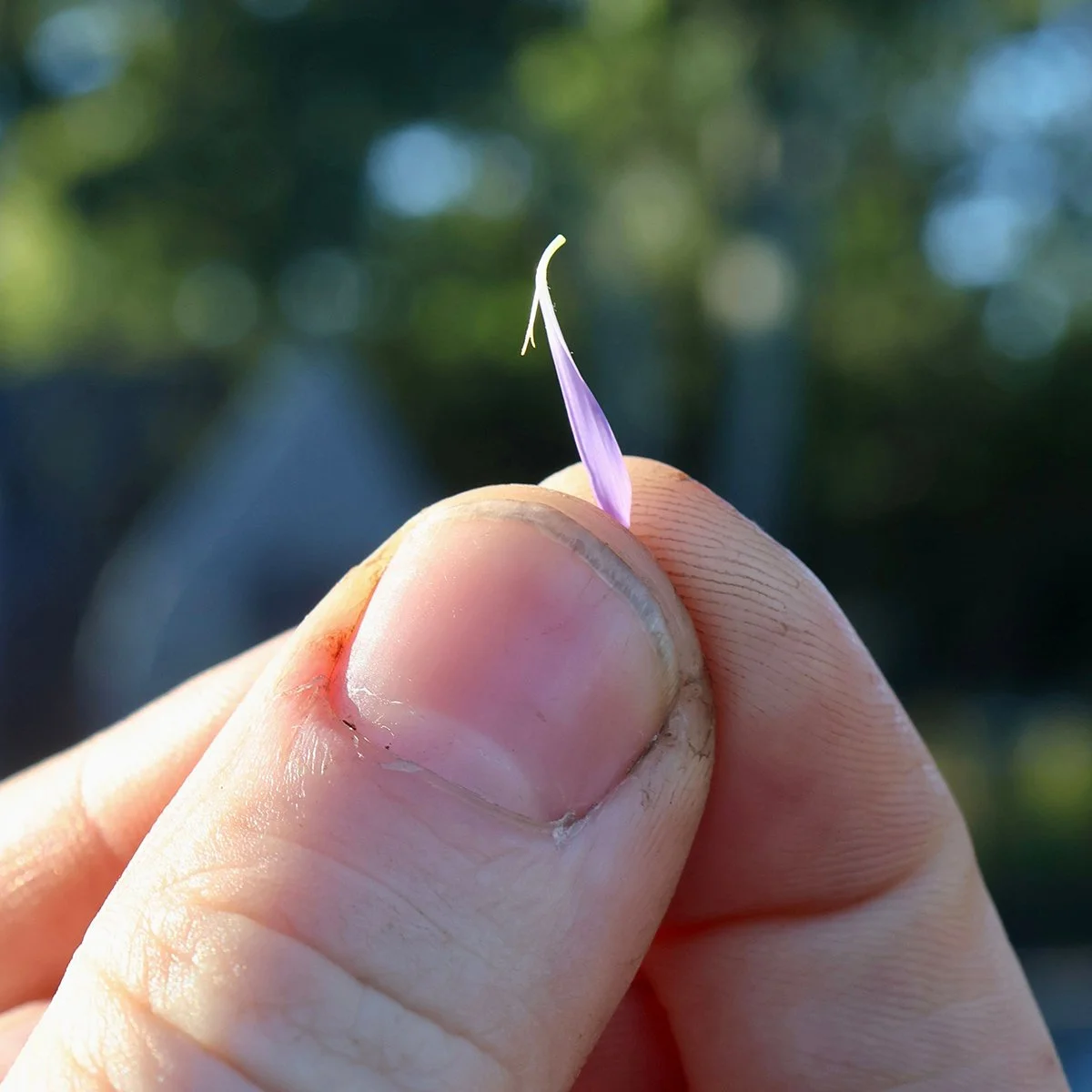ASTERACEAE
THE ASTER FAMILY
by Patrick Best
Asters are the hallmark of the late-season garden. While many associate plants like the native white wood aster (Aster divaricatus) or the long-blooming Monch aster (Aster frikartii) with the term “aster”, you may be surprised to learn that the aster family encompasses a huge variety of late-blooming perennials. From goldenrods (Solidago) to sunflowers (Helianthus), and from black-eyed Susans (Rudbeckia) to mums (Chrysanthemum), asters are everywhere!
Blue wood aster (Aster cordifolius) is a native aster that is well adapted to partial shade, unlike most asters which prefer sunny conditions.
Morphology
Looking closely at an aster flower, you can see that these compound flowers are actually made up of many smaller, individual florets. Disk flowers make up the center of the bloom and lack petals, while ray flowers encircle the central disk and have one petal each. Not all asteraceous plants have blooms consisting of both disk and ray flowers, but their presence is a helpful way to tell that you’re looking at a species in the aster family.
Aster ‘Raydon’s Favorite’ exhibits the dual-floret morphology typical of the family, with the yellow disk flowers in the center and the purple ray flowers around the edge.
A close-up of a single ray flower.
Ecosystem
In the ecosystem, these nectar-rich plants provide forage for a host of insects, especially the pollinators and bees looking for their final meals before the cold weather sets in. Native asters are far more valuable to the wider ecosystem than annual mums. Next time you walk by a mum, notice the absence of pollinators and then consider planting native asters in your fall pots!
Single-flowered annual mums offer the nectar-rich disk flowers valuable for late-season pollinators. The double-flowered mums only consist of ray flowers and are ecologically inert.
Dahlias are a popular late-season bloomer in the aster family and are well-suited to bouquets.
Garden Uses
Generally starting in August, the asters commonly grown on Martha’s Vineyard bloom well into October, allowing the Vineyard gardener to enjoy a profusion of flowers into the fall.
Zinnias, an aster-family annual, provide a long season of color in the landscape
In the garden, it is vital to ensure that a plant’s habit matches the goals you have for that space. Some plants are more useful for their clumping habit, others for their freely-seeding nature, and still others for their rhizomatous spread, more commonly thought of as groundcover behavior, which allows for colonization of larger spaces. As there are a host of beautiful native plants in the Aster family, it is nice to know that any accidental spread of these plants into the wildlands is an act of ecosystem restoration, and not a sign of invasiveness.
Helen’s Flower (Helenium autumnale) blooms throughout the summer in the Vineyard Gardens display bed.
This fall at the nursery, we have a large variety of Asteraceous plants available:
True Asters:
Twilight (rhizomatous spread)
Little Carlow (clumping)
Blue wood aster (clumping)
White wood aster (rhizomatous spread)
Vasterival (rhizomatous spread)
Prof. Anton von Kippenberg
Aster novi-angliae Alma Potschke (clumping)
Winston Churchill
Familiar Annuals:
(Dahlia, Cosmos, Marigold, Ageratum, Zinnia)
Coreopsis
Zagreb
Moonbeam
C. tripteris Gold Standard
Echinacea
E. pallida
Eupatorium/Eutrochium
Joe Pie Weed
Boneset
Helenium
Moerheim Beauty
Sombrero
H. autumnale
Helianthus
Lemon Queen (rhizomatous spread)
Maximillian (rhizomatous spread)
Heliopsis
Summer Sun
Summer Nights
Bleeding Hearts
Leucanthemum/Nipponanthemum
Shasta Daisies (cvs.)
Montauk Daisies
Liatris
L. microcephala
Kobold
Floristan White and Purple
Solidago
Loysden Crown
S. canadensis ‘Crown of Rays’
Little Lemon
Rudbeckia
R. triloba Prairie glow (short-lived, seeds around non-aggressively)
R. subtomentosa Little Henry (clumping)
R. laciniata Autumn Sun/Herbstsonne (clumping)
Vernonia
V. noveboracensis
Chrysanthemum
Hardy (Claire Curtis, Igloo Series, Matchstick…)
Annuals






